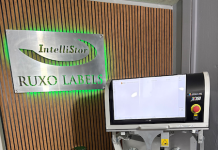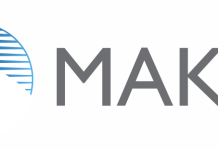According to Focus Label Machinery, some costs can seem relatively small and inconsequential, but they do stack up over time. Nobody likes to pay over the odds for processing, printing and finishing while making their product labels.
Manufacturing ‘overkill’, a lack of production-line streamlining, and inappropriate or sub-optimal material and process choices can all lead to inflated label printing costs. You could potentially save vast amounts of money annually by optimising and streamlining your label printing. Here are some of the best ways to do it.
Match the label to the product
If you are using a one-size-fits-all approach to product labels and packaging, you might be wasting substrate, ink and money on products (such as pre-ordered, boxed items) that don’t need any fancy presentation to attract customers. Investing in small-scale, quick and low-cost techniques (such as thermal printing) for second-tier labels can save money in the long run. You can also adjust the size down for smaller items and pick less expensive types of ‘unfinished’ paper, saving even more.
Forward planning
Many substrate and ink retailers offer generous bulk-buy discounts on label printing media, ink, and adhesives. If you know your demand for the next year, it is a great way to save money.
Advance Stock Allotment can also reserve raw products and label materials for you off-site if you lack the warehouse space to store a full year’s supply. Some suppliers may even offer a’ Call off’ service, where they deliver a fixed number of labels on a monthly basis.
Size reduction
Cutting down the gauge (thickness) and size of your labels is one of the most effective ways to reduce the costs, electricity, and raw materials spent on making each one. Relatively minor, scaled reductions of 5-20% (width x length) can stack up into significant savings for bulk orders over a period of 12 months.
Fixed templates
Sometimes, production lines incur additional costs by making a label range that’s too diverse. This can happen due to poor planning, product line ‘absorption’ over time, or mixed and outdated equipment causing inconsistencies.
If you have one type of cost-effective, adaptable product label in production, it can make sense to transfer your existing designs onto that size of label. Running a bulk load with industrial-scale printing will also save money, even if the individual designs for sections of the run differ.
Landfill waste reduction
Did you know that many used labels and label offcuts can easily be recycled and reused? You can also sell waste materials such as paper and card to recoup printing costs. Try installing recycling bins at crucial checkpoints (such as cutting and pasting) on your label production lines.
Modern digital printing machinery
Older, analogue printing machines wasted vast amounts of electricity due to their ‘always on’ runtime pattern. More up-to-date presses use smart adaptation technology to switch off sections of the press or to idle when not printing, saving energy, CO2, and money.
Digital printing presses are highly adaptable, processing a much more extensive range of designs, styles, and material types on the fly. This can help you to avoid investing in too many niche, rarely-used machines.
[sc name=”subscribe-socialmedia” ]
[sc name=”submit-newsvideos” ]
FOCUS LABEL
https://www.focuslabel.com/





















